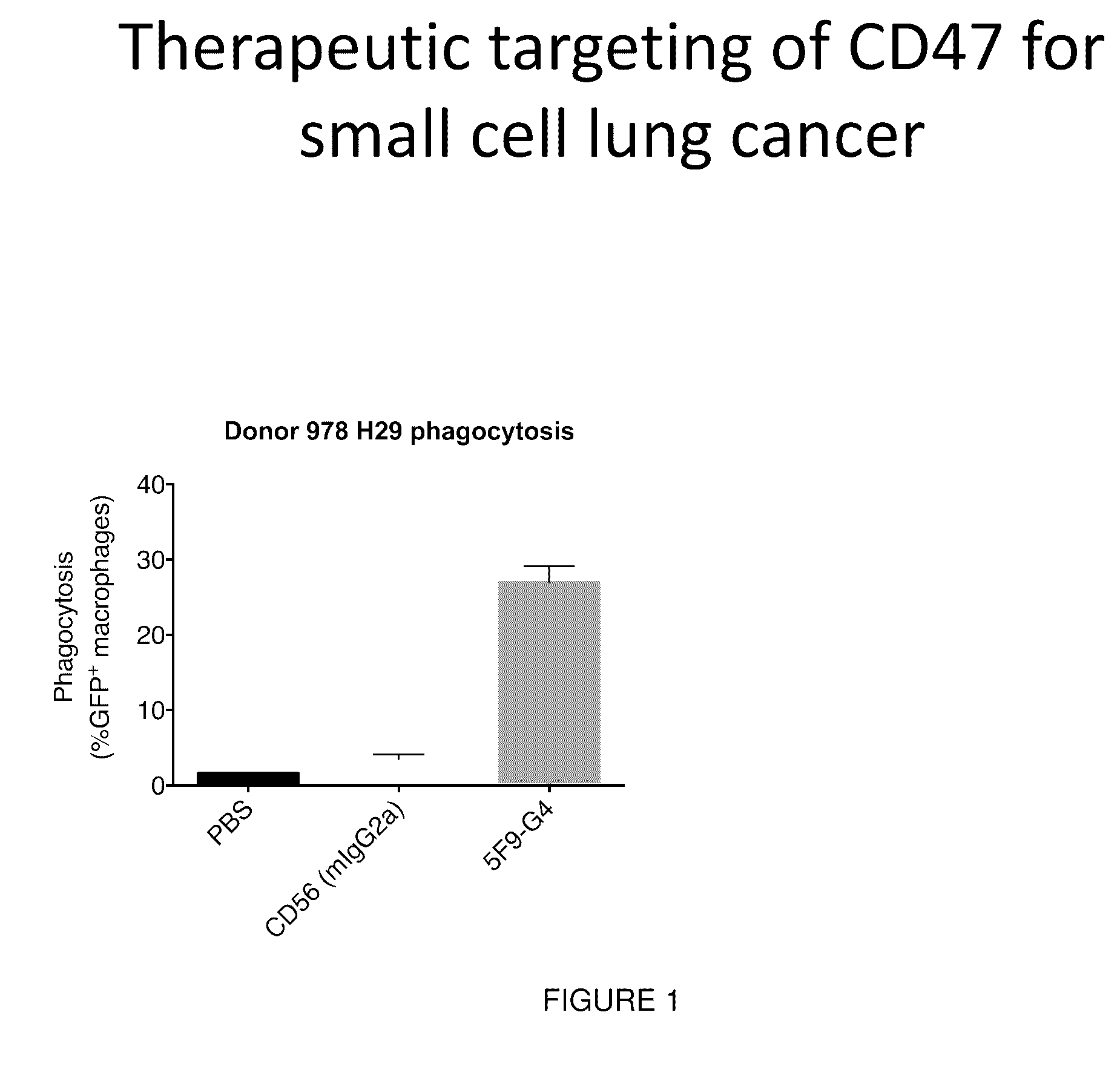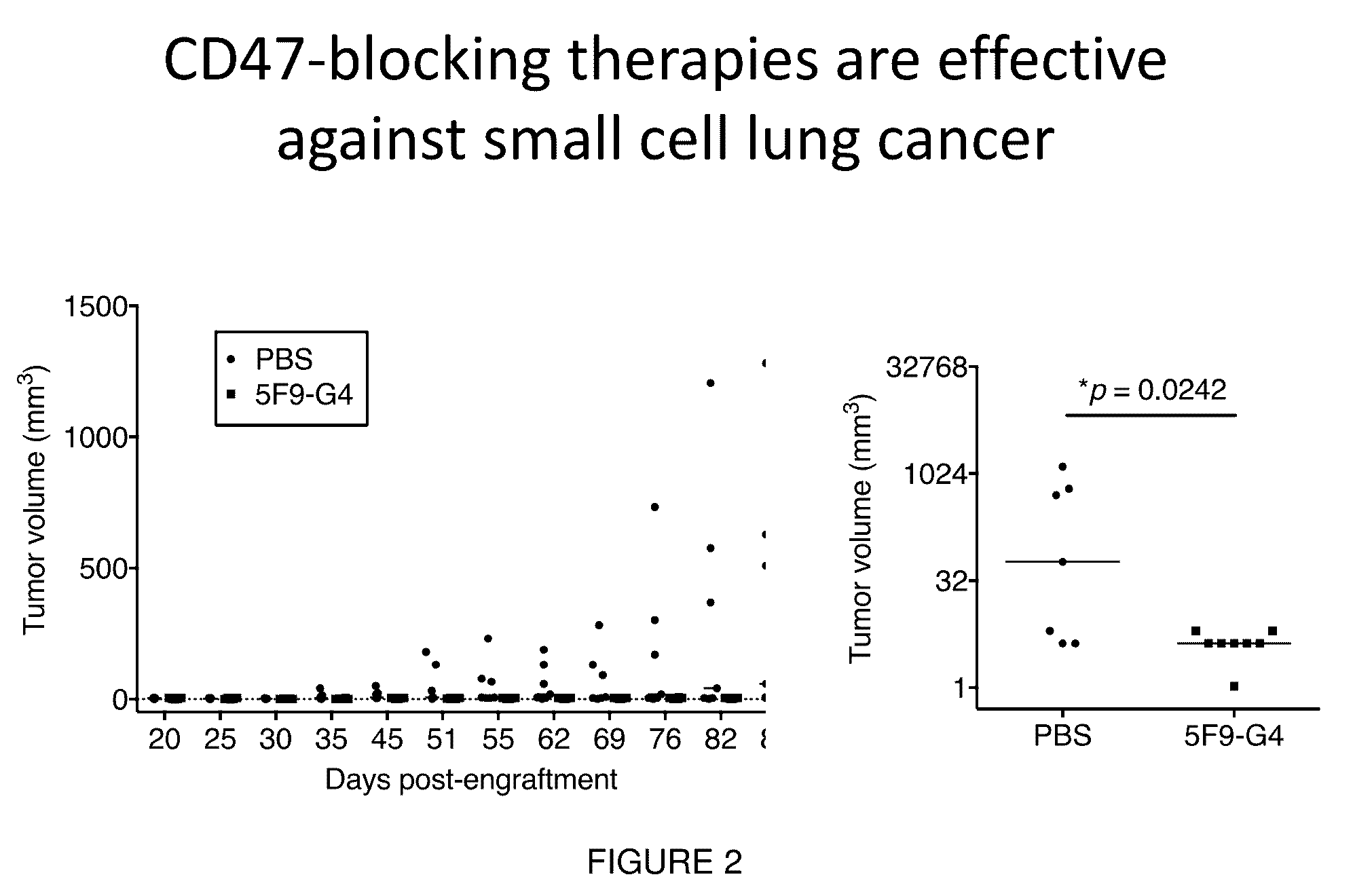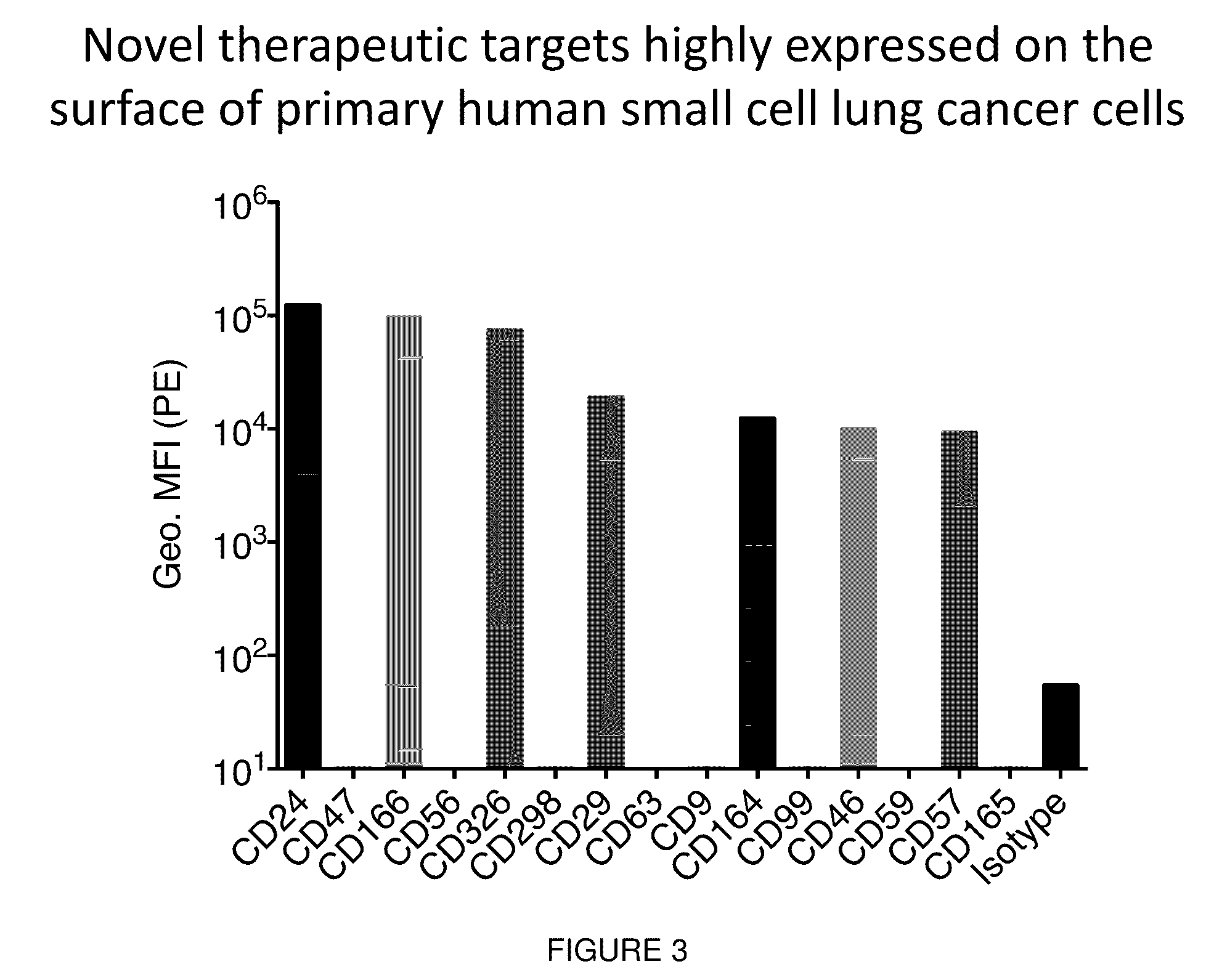Targeted Therapy for Small Cell Lung Cancer
a lung cancer and targeted therapy technology, applied in the direction of antibody medical ingredients, peptide/protein ingredients, drug compositions, etc., can solve the problems of complement dependent cytotoxicity (cdc), direct cell toxicity,
- Summary
- Abstract
- Description
- Claims
- Application Information
AI Technical Summary
Benefits of technology
Problems solved by technology
Method used
Image
Examples
example 1
[0102]High-affinity SIRPα variants enhance macrophage destruction of small cell lung cancer.
[0103]CD47 allows cancer cells to evade the immune system by signaling through SIRPα, an inhibitory receptor on macrophages. We recently developed next-generation CD47 antagonists by engineering the N-terminal immunoglobulin domain of SIRPα. These “high-affinity SIRPα variants” have an affinity for human CD47 (KD) as low as 11.1 pM, approximately 50,000-fold improved over wild-type SIRPα. When combined with tumor-specific antibodies, the high-affinity SIRPα variants act as immunotherapeutic adjuvants to maximize macrophage destruction of cancer cells.
[0104]We have now applied these reagents to small cell lung cancer (SCLC), a cancer with poor prognosis for which no clinically approved antibodies exist. We found SCLC cell lines and primary samples expressed high levels of CD47 on their surface. Using human macrophages, we found that CD47-blocking therapies were able to induce macrophage phagoc...
example 2
[0106]CD47-blocking therapies stimulate macrophage destruction of small cell lung cancer.
[0107]Small cell lung cancer (SCLC) is a highly aggressive subtype of lung cancer with dismal prognosis. There are no clinically approved antibodies, targeted therapies, or immunotherapies for the disease. We found that SCLC samples expressed high levels of CD47, a cell-surface molecule that allows cancer cells to evade the immune system. In particular, CD47 promotes immune evasion by signaling through SIRPα, an inhibitory receptor on macrophages. We hypothesized that CD47-blocking therapies could be applied to the treatment of SCLC. We found that CD47-blocking therapies were able to induce macrophage phagocytosis of SCLC samples in vitro. CD47-blocking therapies also inhibited tumor growth and significantly prolonged survival of mice bearing SCLC tumors. Furthermore, using comprehensive antibody arrays, we identified several new and established therapeutic targets on the surface of SCLC cells. ...
PUM
| Property | Measurement | Unit |
|---|---|---|
| time | aaaaa | aaaaa |
| time | aaaaa | aaaaa |
| weight | aaaaa | aaaaa |
Abstract
Description
Claims
Application Information
 Login to View More
Login to View More - R&D
- Intellectual Property
- Life Sciences
- Materials
- Tech Scout
- Unparalleled Data Quality
- Higher Quality Content
- 60% Fewer Hallucinations
Browse by: Latest US Patents, China's latest patents, Technical Efficacy Thesaurus, Application Domain, Technology Topic, Popular Technical Reports.
© 2025 PatSnap. All rights reserved.Legal|Privacy policy|Modern Slavery Act Transparency Statement|Sitemap|About US| Contact US: help@patsnap.com



